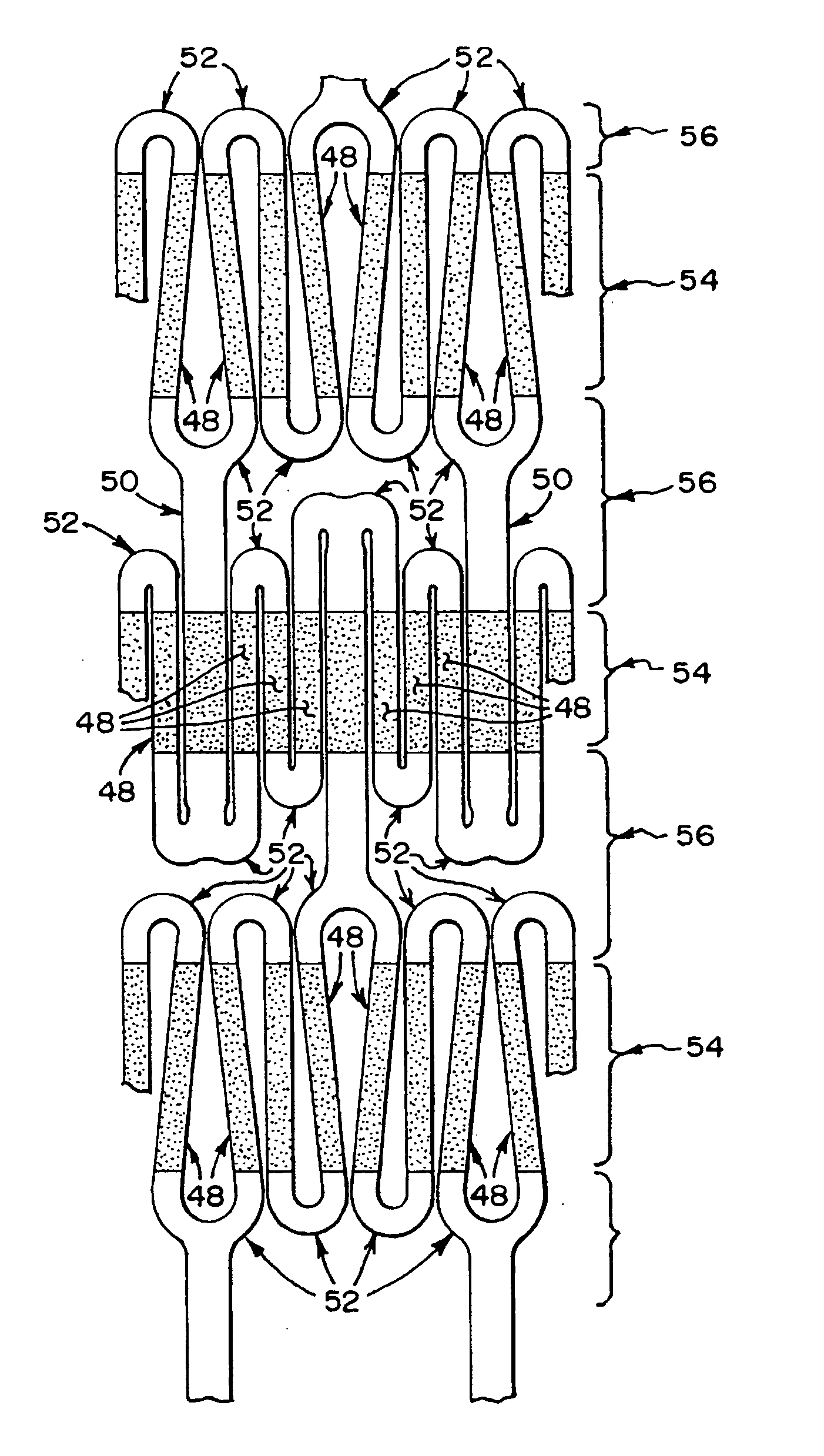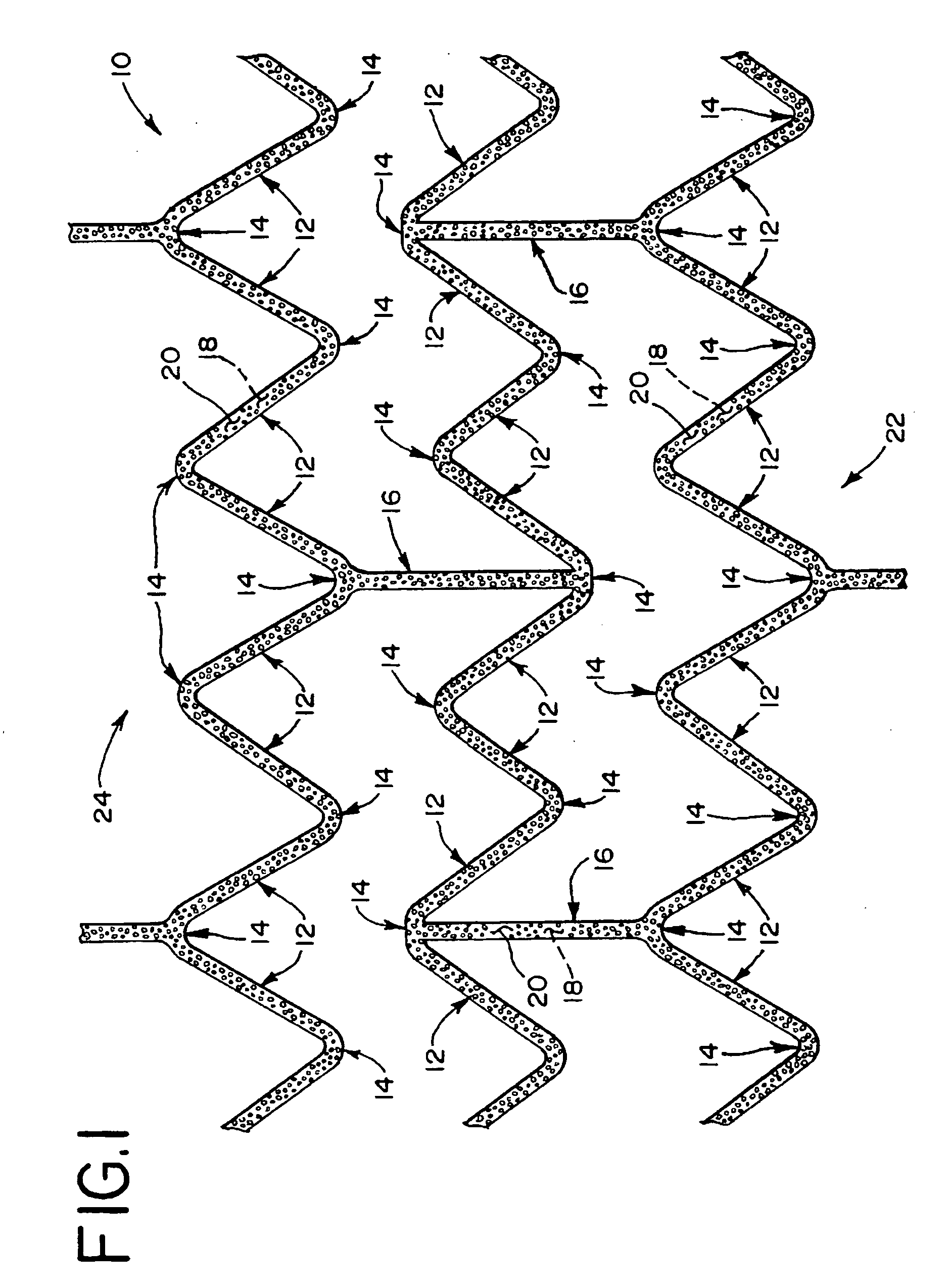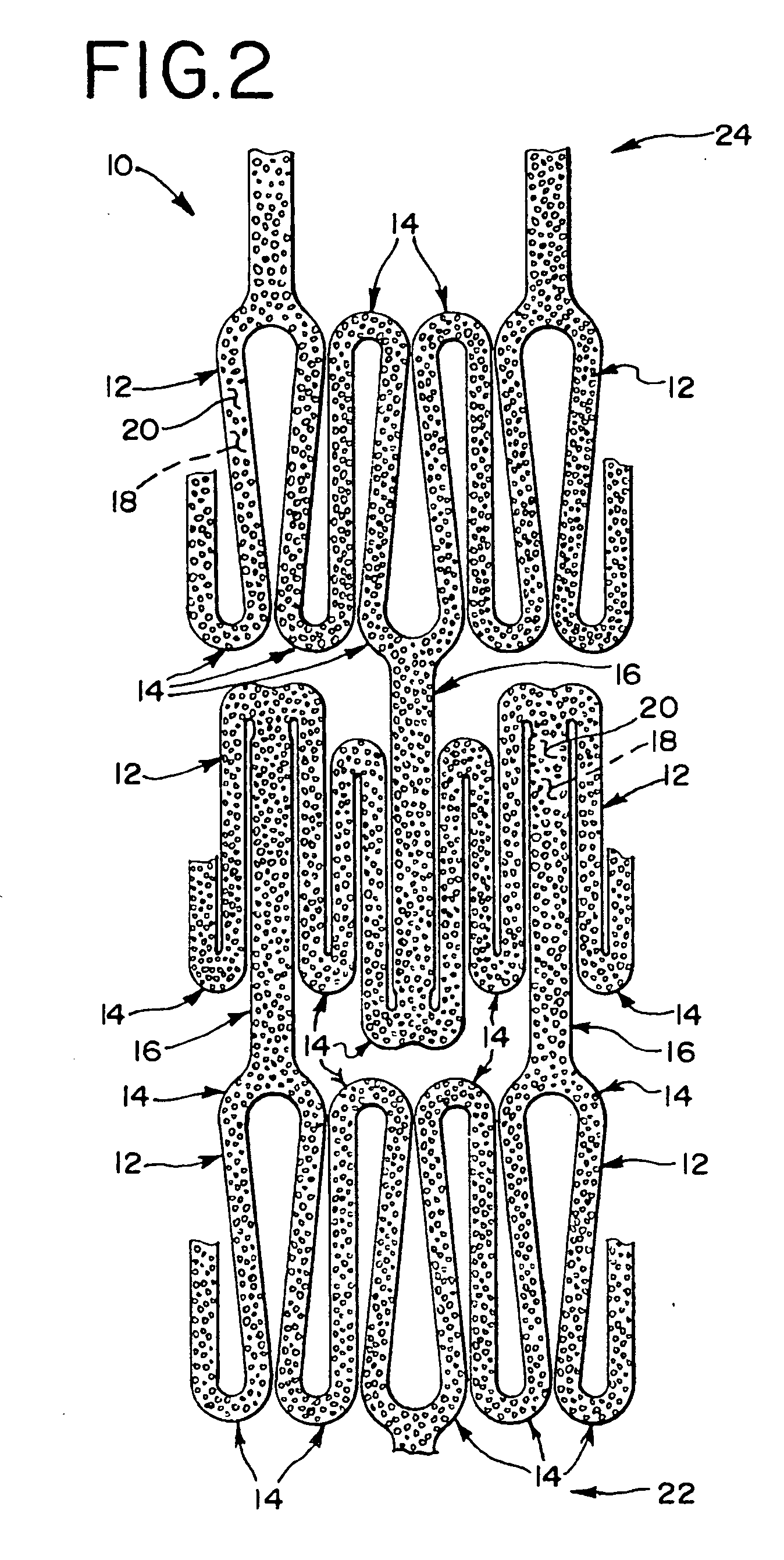Eluting, implantable medical device
a medical device and implantable technology, applied in the field of medical devices, can solve the problems of balloon-expandable stents, balloon-expandable stents, risky surgery, etc., and achieve the effect of minimizing fracturing the ceramic layer and less strain
- Summary
- Abstract
- Description
- Claims
- Application Information
AI Technical Summary
Benefits of technology
Problems solved by technology
Method used
Image
Examples
Embodiment Construction
[0098] Referring now to the drawings, and particularly to FIGS. 1 and 2, an endoluminal stent 10 is shown. The structure of the stent 10 that is shown is only one example of the type of stent structure that may be used and many other stent structures known in the art may also be used. The stent 10 is made from a series of angular struts 12 interconnected with bends 14. Longitudinal struts 16 may also be used to interconnect the bends 14 and angular struts 12, thereby forming a cylindrical structure with an inner surface 18, an outer surface 20, a proximal end 22 and a distal end 24. Preferably, the stent 10 is expandable between a collapsed configuration as shown in FIG. 2 and an expanded configuration as shown in FIG. 1.
[0099] Typically, the collapsed configuration is suitable for introducing the stent 10 into a vessel of a patient and passing the stent 10 through the vessel to a portion to be treated. This may be achieved using a variety of different procedures which may be adapt...
PUM
 Login to View More
Login to View More Abstract
Description
Claims
Application Information
 Login to View More
Login to View More - R&D
- Intellectual Property
- Life Sciences
- Materials
- Tech Scout
- Unparalleled Data Quality
- Higher Quality Content
- 60% Fewer Hallucinations
Browse by: Latest US Patents, China's latest patents, Technical Efficacy Thesaurus, Application Domain, Technology Topic, Popular Technical Reports.
© 2025 PatSnap. All rights reserved.Legal|Privacy policy|Modern Slavery Act Transparency Statement|Sitemap|About US| Contact US: help@patsnap.com



